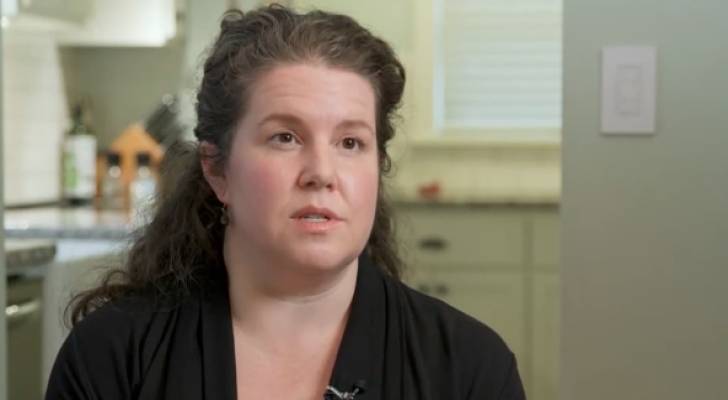
Imagine taking your daughter to a clinic for allergy testing, then learning your insurer was billed $24,000 for it, $5,400 of which you must pay. You’d probably assume a mistake was made. That’s exactly what Kaitlin Johnson of Minneapolis thought when this happened to her.
Johnson called around and found most clinics charged around $1,827 for the testing. Yet, her clinic insisted the fee was correct. Only after eight months of fighting and inquiries from PBS News did the facility finally reduce that price.
Don’t miss
- I’m 49 years old and have nothing saved for retirement — what should I do? Don’t panic. Here are 5 of the easiest ways you can catch up (and fast)
- Thanks to Jeff Bezos, you can now become a landlord for as little as $100 — and no, you don’t have to deal with tenants or fix freezers. Here’s how
- Gain potential quarterly income through this $1B private real estate fund — even if you’re not a millionaire. Here’s how to get started with as little as $10
Obviously, most people can’t get the press to call to question their medical bills. So, sadly, many patients at that clinic likely got stuck paying through the nose for allergy testing. They aren’t the only ones, either. All across the country, patients are being surprised with huge bills for routine care, even as many states try to take action to stop it.
Here’s why this is happening, along with some tips on how to avoid it.
Facility fees hit more independent clinics — and patients
There’s one big reason why so many patients are facing unexpectedly high bills for basic care. More of that care is now being provided by clinics affiliated with hospitals. In fact, in 2024, 55% of all doctors were employed by hospitals or health systems, which is more than double the number from 2012, according to PBS News investigation.
This becomes a problem because hospitals can tack on facility fees and inflate charges for routine care. They do this to make up for the fact that they’re often reimbursed less than the cost of care by insurers, or not reimbursed at all, because laws like the Emergency Medical Treatment & Labor Act require them to provide emergency care regardless of payment ability.
"Insurers payers are squeezing providers to the point where they are no longer financially stable," Molly Smith, vice-president of public policy at the American Hospital Association, told PBS.
Smith also explained that inflation has made providing care even more expensive, but insurers haven’t adjusted payouts accordingly, leaving hospitals with a greater financial burden to compensate for.
Sadly, while most people expect inflated prices at hospitals, patients often don’t realize until it’s too late that fees and surcharges are showing up in bills for outpatient care at hospital-owned clinics. That’s what happened to Jess Ayers when she took her daughter for treatment of a lazy eye and got a bill with a $176 facility fee.
"I was dumbfounded because I’d never heard of it, and having worked in health care for a long time, I was taken aback," Ayers told PBS.
Christine Monahan, assistant research professor at the Center on Health Insurance Reforms at Georgetown University, also pointed out another reason patients like Ayers and Johnson are coping with these surprising costs. It’s because insurance deductibles have increased over time.
"More and more, you might be directly responsible," Monahan told PBS.
Consumer Shield confirms average deductibles hit $1,790 in 2024, up from $584 in 2006 and $1,220 in 2014. With higher deductibles, more consumers must pay out-of-pocket for facility fees and inflated hospital prices, rather than their insurer just footing most or all of the bill.
Read more: Want an extra $1,300,000 when you retire? Dave Ramsey says this 7-step plan ‘works every single time’ to kill debt, get rich in America — and that ‘anyone’ can do it
How to protect against huge surprise bills
If you’re now worried about high facility fees, the first thing to know is that some lawmakers are trying to protect patients from this financial burden. Georgetown University reported on the state of these reforms in 2023, indicating that Connecticut, Indiana, Maine, Maryland, New York, Ohio, Texas, and Washington had banned facility fees for at least some providers and care settings.
In Connecticut, for example, facility fees can’t be charged for telehealth or for evaluation and management services on or off campus. New York lawmakers are now hoping to go even further by imposing a cap not just on facility fees, but also on services charged at outpatient clinics for those with commercial insurance.
Other states, like Colorado, limited consumer financial exposure to outpatient off-campus facility fees by prohibiting a separate co-payment on them. And, more than half a dozen locations require covered providers to disclose facility fees and expected costs.
Unfortunately, not everyone who seeks medical care lives somewhere where these protections are in place. Those who don’t need to be especially careful to avoid surprise bills. Patients can do this by:
- Asking for a detailed written estimate up front.
- Researching clinic ownership and looking for providers who aren’t affiliated with hospital systems.
- Requesting itemized bills to better understand charges.
- Negotiating with care facilities to reduce rates.
- Asking about discounts for cash-paying patients if they don’t have insurance or won’t meet their deductible.
Finding a clinic that doesn’t charge these fees may involve added time and hassle. Ayers, for example, located a provider 40 minutes away that doesn’t impose a facility fee for her daughter’s eye treatment. However, if you can save hundreds by doing the research to find a clinic that won’t overcharge, it’s likely worth the effort to make that happen.
What to read next
- Don’t have the cash to pay Uncle Sam in 2025? You may already be eligible for a ‘streamlined’ handshake with the IRS — here’s how it works and how it can potentially save you thousands
- Here are 5 ‘must have’ items that Americans (almost) always overpay for — and very quickly regret. How many are hurting you?
- Robert Kiyosaki warns of a ‘Greater Depression’ coming to the US — with millions of Americans going poor. But he says these 2 ‘easy-money’ assets will bring in great wealth. How to get in now
This article provides information only and should not be construed as advice. It is provided without warranty of any kind.


